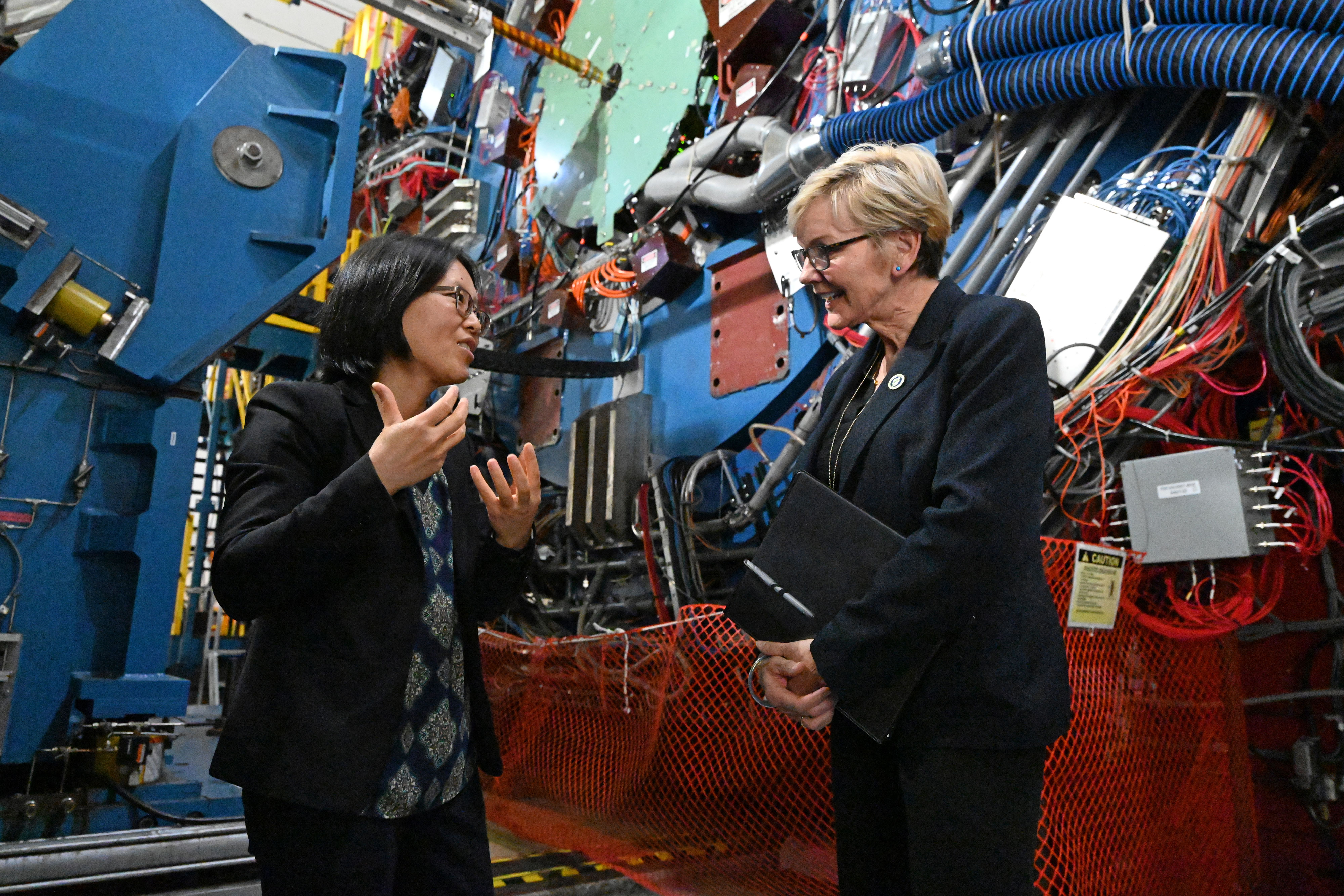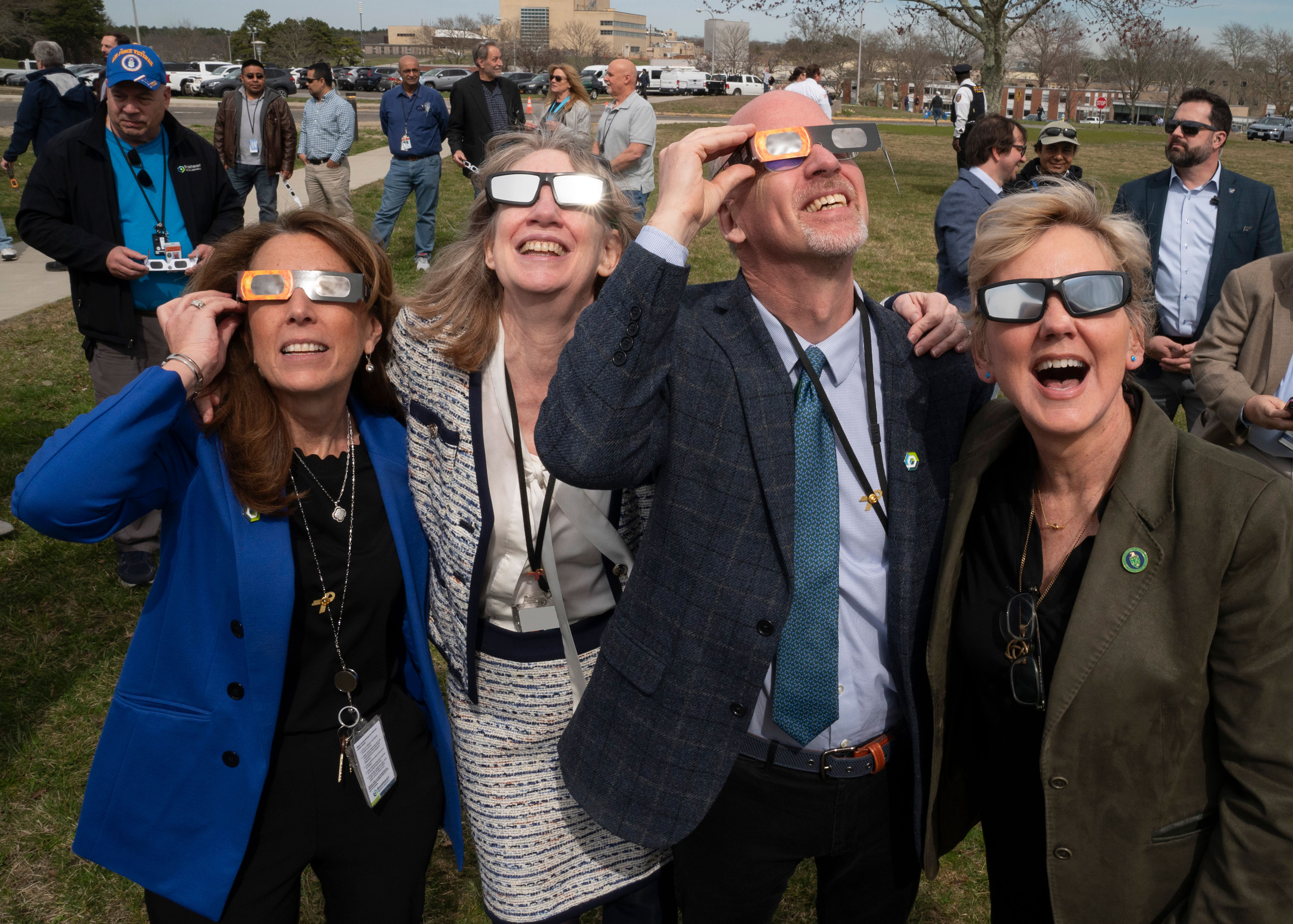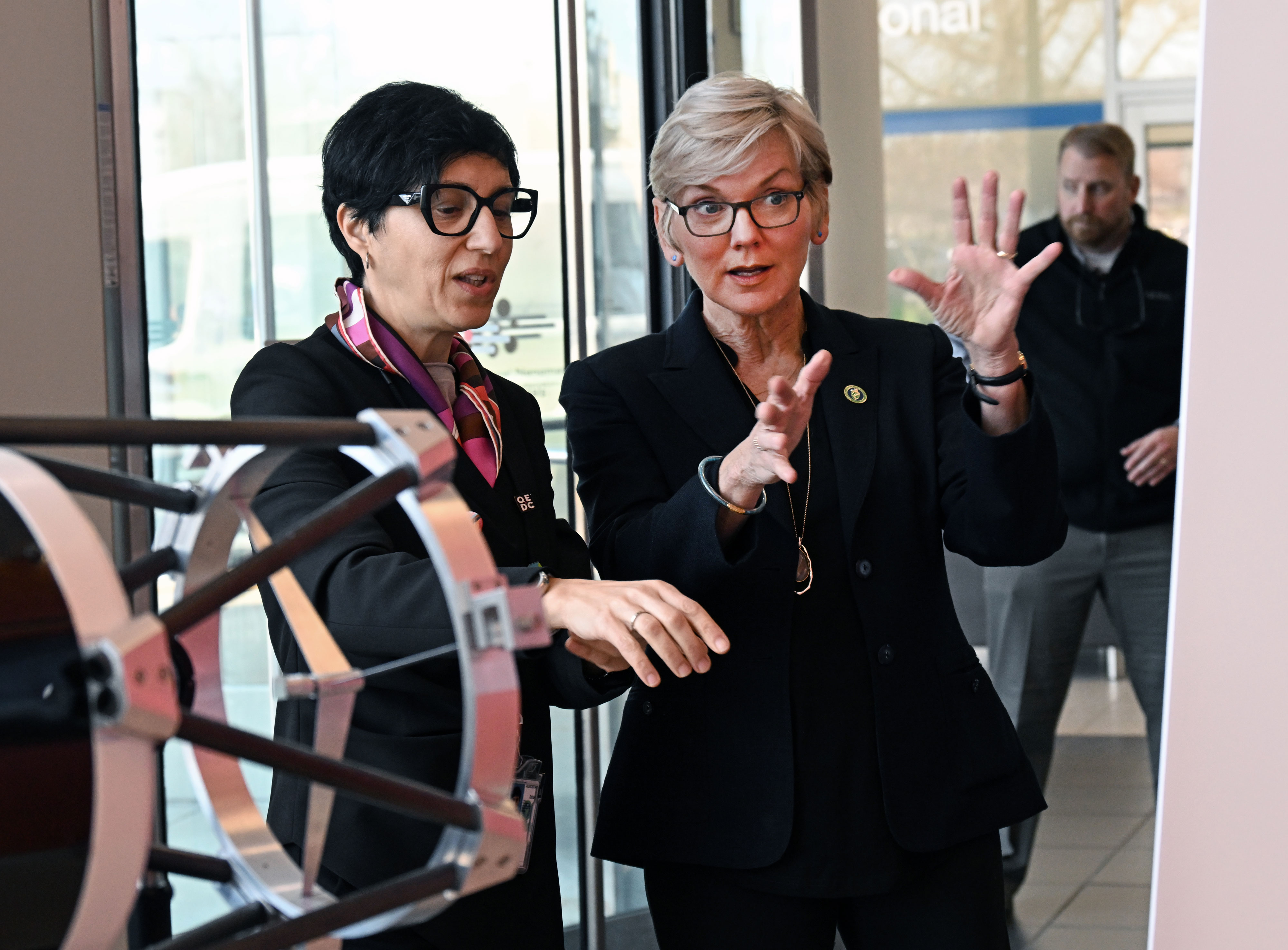Newswise — U.S. Secretary of Energy Jennifer Granholm visited the U.S. Department of Energy’s (DOE) Brookhaven National Laboratory on April 8-9, getting an up-close look at cutting-edge facilities researchers use to advance the mission of DOE and its Office of Science.
Brookhaven Lab has expertise in nuclear and particle physics, energy and climate sciences, quantum information science and artificial intelligence research, and cross-disciplinary research to power and secure the nation. The Lab’s combination of facilities, people, and equipment gives it a unique and vital role in addressing national needs.
On April 8, Secretary Granholm’s first in-person visit to Brookhaven Lab kicked off with a stop at the site of the Baryon Mapping eXperiment (BMX), a prototype radio telescope developed at Brookhaven to learn more about the universe and its origins. The BMX tour stop launched a discussion about a project known as Lunar Surface Electromagnetics Experiment-Night (LuSEE-Night), a partnership between DOE and NASA to land a radio telescope on the far side of the moon in hopes of detecting radio waves lingering from the Dark Ages of the universe. These signals could help researchers reveal answers about some of the universe’s most elusive questions, such as the nature of dark energy or the formation of the universe itself.
The cosmic conversation continued as Secretary Granholm joined more than 1,100 members of the Lab community as they gathered to witness the day’s much-anticipated solar eclipse, which reached 90.4 % totality in Upton, New York.
Secretary Granholm’s visit resumed on April 9 with a tour of world-class facilities across the Lab campus and meetings with researchers, students, and support staff dedicated to DOE’s mission in multiple areas of science.
After an overview of the National Synchrotron Light Source II, a DOE Office of Science User Facility that generates ultrabright beams of light for experimental stations used to reveal the electronic, chemical, and atomic structure of materials, she met with scientists who use the New York State-funded High Energy Engineering X-ray (HEX) beamline there to studying energy storage solutions and advance clean energy research.
She also heard about efforts in discovery driven by data science, artificial intelligence, and machine learning.
The tour included a stop at the Center for Functional Nanomaterials, a DOE Office of Science User Facility where advanced instrumentation enables scientists to conduct transformative nanoscience research to support the energy, economic, and national security of the nation. The secretary met with leaders in Brookhaven Lab’s quantum activities and microelectronics research, viewed the Quantum Material Press (QPress), and heard about the Lab’s role in establishing one of the world’s longest quantum networks.
Secretary Granholm also talked with environmental and climate scientists about the Center for Multiscale Applied Sensing — where researchers develop and use a suite of instruments to observe the atmosphere, including from a mobile “climate truck” — and discussed microplastics research conducted by a local high school student.
Later, the secretary toured tunnels that will house components of the future Electron-Ion Collider (EIC) — a state-of-the art discovery machine that will be constructed at Brookhaven Lab in partnership with DOE and DOE’s Thomas Jefferson National Accelerator Facility, in addition to support from multiple institutions. The EIC will offer physicists a fresh perspective on visible matter as we know it as researchers aim to better understand the “glue” that holds it all together.
The tunnels currently serve the Relativistic Heavy Ion Collider (RHIC), DOE Office of Science User Facility for nuclear physics research. The secretary had the chance to see the Solenoidal Tracker at RHIC, or STAR, a detector that captures snapshots of the thousands of particles produced by each ion collision at RHIC.
At STAR, Secretary Granholm then joined New York Lieutenant Governor Antonio Delgado, Senator Chuck Schumer (virtually), Laboratory leaders, and federal, state, and local stakeholders for an event to commemorate New York State’s $100 million investment in the EIC project. Over the next four years, these milestone funds will support the design, construction, and hardware infrastructure installation of the initial four buildings out of a potential 14 that are part of the EIC project.
“Projects like this don’t just happen and they don’t just happen every day — this is the only collider set to be built in the next 10 to 20 years worldwide,” Secretary Granholm said. “The Electron-Ion Collider is a quintessential lab project, opening new vistas for scientific discovery, and in the process hiring hundreds of Long Island union workers to build the collider. I am grateful to Governor Hochul along with Senators Schumer and Gillibrand for their leadership on this game-changing initiative.”
The visit ended with a public Secretary of Energy Advisory Board (SEAB) quarterly meeting. SEAB provides advice and recommendations to the Secretary on energy policies, DOE’S basic and applied research and development activities, economic and national security policy, and more. The board’s April 9 meeting focused on more steps to modernize the nation’s grid and meet the growing power demand of AI tech with renewables.
“We were thrilled that the Secretary joined us to watch a stunning solar eclipse with our staff, hear scientists from across the Lab share their exciting research, and celebrate a milestone that will help move the Electron-Ion Collider project forward,” said Laboratory Director JoAnne Hewett. “It was a wonderful visit, and we can’t wait to have her back in the future.”
Brookhaven National Laboratory is supported by the Office of Science of the U.S. Department of Energy. The Office of Science is the single largest supporter of basic research in the physical sciences in the United States and is working to address some of the most pressing challenges of our time. For more information, visit science.energy.gov.
Follow @BrookhavenLab on social media. Find us on Instagram, LinkedIn, X, and Facebook.



